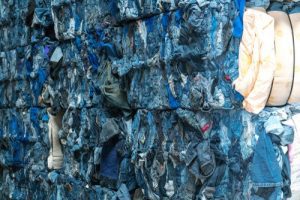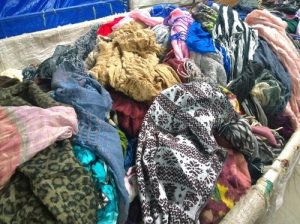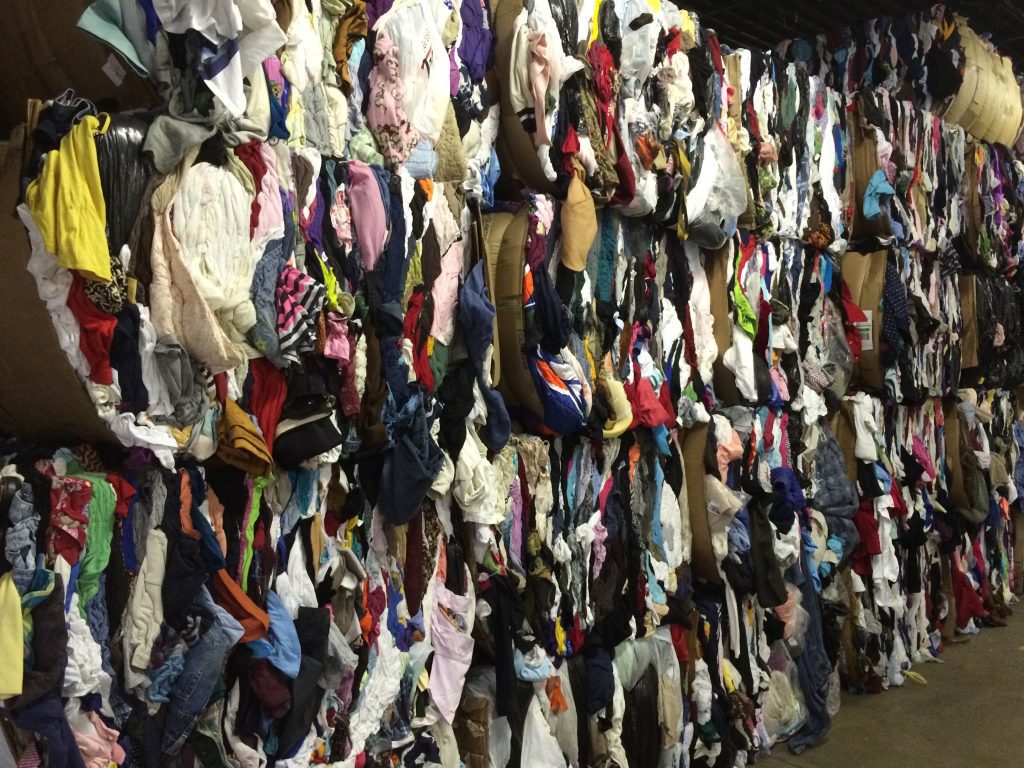When we use the term ‘mixed rags’ or ‘institutional clothing,’ we are referring to a category of clothing that is considered ‘used’ that either was not sold in a resale or was not suitable for resale. That means that these items were either store returns, apparels and household rummages from thrift store locations or discount apparel stores. The reasons for this are many, but generally include materials that are imperfect — they may have stains, rips, broken zippers or missing buttons. Like many other used clothing materials, ‘mixed rags’ are first donated to a thrift store or charity, and if they are not sold, they are then removed from the storefront and sent to a warehouse. In these cases, at times, these materials may also have the pricing tags still attached from their original thrift store location. There they are sorted, compressed into bales of clothing, stored until they can be sold, and once they have a market for sale they are sold in bulk and by weight to clothing wholesalers. It is often the case that these materials are packaged in amounts of 800-1,200-point bags.
Institutional Clothing provides consumers with many benefits and can be re-directed for usage in a variety of industries. Mixed Rags claims that 45% of materials labelled ‘mixed rags’ are sold as secondhand clothing to other domestic or overseas markets, while 30% are re-made into rags for industrial markets. These include wiping rags for the automotive, home improvement and manufacturing industries. An additional 20% are also shredded into fiber that is then used to stuff couches and chairs, carpet padding, and home insulation. They can also be used in the production of other miscellaneous materials such as blankets, tablet and phone cases. Finally, the final 5% are often gotten rid of due to being compromised, and therefore deemed unusable due to chemical contamination or water damage.

These particular materials play an important role in achieving sustainability in the textile industry — an industry that saves approximately four billion pounds of used clothing from being trashed into landfills. We are able to use this institutional grade of used clothing, which is generally produced by second-hand and thrift stores, and move it across states and provinces in the United States and Canada — thereby preventing its housing in landfills across North America. In order to do so, we generally deal with businesses that range from large and small thrift store retailers, to not-for-profit community-based collectors, and even private collectors and consolidators.
At Bank & Vogue, we are actively a part of addressing the ‘crisis of stuff’ by engagement in the ‘mixed rags’ market. A segment of our business involves piecing together mixed rags from various locations across American and Canadian markets. As a result, we are considered both a competitive and reliable seller of mixed rags materials. Aside from the obvious ways mixed rags are packaged, at Bank & Vogue we are also able to provide our clientele with export loads of loose rather than baled mixed rags as part of special orders that our sellers produce. In these cases, clients should contact us to let us know exactly what type of source will best serve their business, and our team can provide you with the necessary details on shipping and logistics.








